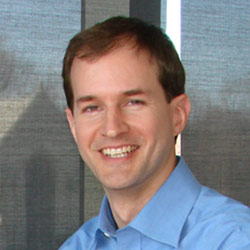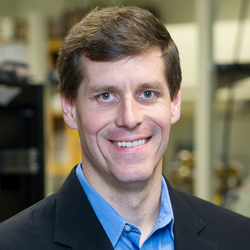New Method Speeds Up Materials Testing
Discovery could accelerate the understanding and application of 2D materials
The race to build the next generation of computers based on materials so thin they are considered two-dimensional is no 100-meter dash.
The tedious task of cataloguing these materials’ properties — everything from how stable they are in air to their electrical resistivity to how they are processed at extreme temperatures or pressures — is arduous, expensive, and time-consuming.
The legions of graduate students doing this grueling work will be thanking a team of Northwestern Engineering researchers that has successfully developed a method that cuts out a particularly laborious part of the process and thus speeds up considerably the feedback loop in testing the materials’ anisotropic characteristics.
The team’s work, titled “All-electrical determination of crystal orientation in anisotropic two-dimensional materials,” was published online today, February 21, in the journal Physical Review Letters.

“This work simplifies and shortens the experimental feedback loop, which will accelerate fundamental understanding and application development for 2D materials,” said Mark C. Hersam, Walter P. Murphy Professor of Materials Science and Engineering, who led the team that fabricated the samples.
Since graphene, a single layer of graphite, was produced in 2004, scores of other 2D materials called van der Waals materials have been identified. The potential of these layered crystalline semiconductors for computational logic, photovoltaics, and other areas is great, but the challenge in handling the materials, determining their inherent characteristics and how they act when put in few-layer form is an impediment to their use.

Traditionally, that process meant shining polarized light on the flake — keep in mind it’s just 10 by 10 microns, a fraction of the cross-section of a human hair — measuring the reflection, deducing the orientation of the crystal, then physically carving this tiny flake into a regular shape, sending a current through it in two directions, and finally measuring the voltage.
“That is extremely cumbersome,” Grayson said. “We needed a more rapid scheme because we are still in the process of understanding these materials.”
Instead, the Northwestern team took three measurements from a randomly shaped and oriented black phosphorous flake fabricated into a device by Spencer Wells and Christopher Ryder of the Hersam group. Using conformal mapping and other applied math techniques, they then virtually reshaped the sample and determined not only the crystal orientation but also its effects on resistivity.
“Rather than actually taking the piece of raw material and carving it with a lithographic etch, an ion beam, or heaven forbid whatever precision tool you’re going to be using, rather than doing it mechanically, you are reshaping the sample in the mind of the computer and the computer is able to sort out what the orientation must have been in order to produce the results you measured,” Grayson said.
Grayson credits the breakthrough to a bird’s-eye view of a number of fields, from applied math to materials physics to his own field of electrical engineering — and to his high school algebra. The algebra student learns that to solve for three unknowns one needs three independent equations. Looking at these 2D materials, Grayson realized he had three unknowns: orientation and resistivity along the major and minor axes, and that by taking three independent resistivity measurements, three equations could be defined to solve for these unknowns.
Grayson posed the problem to graduate student and first author Lintao Peng and “we went to our respective notebooks and got to work.” They came back with two different solutions — Grayson’s method was intuitive and graphical, and Peng’s method used brute force computation; both are included in the paper — and they both worked.
“I am very excited about solving this fundamental problem with our simple, elegant method,” Peng said, adding that it was a great example of the importance of thinking about the bigger picture when tackling research projects.
“I think this is going to become the standard way of characterizing such samples,” Grayson said. “People will see this and say, ‘That’s a heck of a lot better than the way I’ve been doing it.’ That’s my hope.”